order

Coleoptera
“Adult Beetles”

Coleoptera
“Larval Beetles”

Diptera
“True Flies”

Ephemeroptera
“Mayflies”

Hemiptera
“True Bugs”

Lepidoptera
“Aquatic Caterpillars, Snout Moths”

Megaloptera
“Alderflies, Dobsonflies, and Fishflies”

Odonata
“Dragonflies and Damselflies”

Plecoptera
“Stoneflies”

Trichoptera
“Caddisflies”
family
Leptophlebiidae
Neoleptophlebia
“Prong-gilled Mayflies”
Genus Overview
This common and widespread genus includes about 7 species in North America. Larvae live on sediments and detritus in lotic-erosional (fast-water) habitats, where they are efficient swimmers and are clingers and sprawlers on the substrate. The feed as collectors-gatherers on coarse detritus and diatoms, occasionally shredding larger detritus. Fly fishers know different species as Blue Quills and Mahogany Duns. This genus was recently a part of Paraleptophlebia, 32 species. Separation of the two genera comes down to the length of the split in the gills, Neoleptophlebia has a shallow fork and tracheal branches in the gill.
Characteristics
POLLUTION TOLERANCE
Southeast: 1.2 and higher
Upper Midwest: 1 and higher
Midwest: 2.8 and higher
Mid-Atlantic: 1 and higher
0 = least tolerant, 10 = most tolerant
FEEDING HABITS
Collector / Gatherer
Shredder / Detritivore
Shredder / Detritivore
MOVEMENT
Clinger
Sprawler
Swimmer
Sprawler
Swimmer
DISTRIBUTION
Widespread (east of the Rocky Mtns.)
HABITAT
Lotic-erosional
Diagnostic Characters
Order
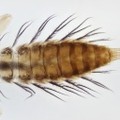
Abdominal Gills
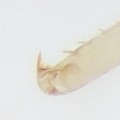
Single Tarsal Claw

Usually 3 Tails
Family
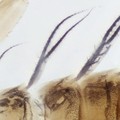
Double Lamellate Gills
+ Expanded Character List
Order:
Wings developing in wing pads. Mouthparts suitable for chewing. Gills present on tops and sides of abdomen. Segmented legs present. One tarsal claw per leg. Usually with 3 tails (sometimes 2).
Family:
Mandibular tusks absent. Gills on abdominal segment 1 with single or double lamellae (plates) or forked. Gills on segments 2–7 double-layered lamellate (plate-like) and terminated in filaments or points and without fringe, or oval with fringe.
Genus:
Labrum with shallow, median notch along distal margin. Abdominal gills on segments 1–7 of similar shape, forked, but those on first segment slightly smaller. Tusks absent. Mature larvae 2–8 mm in length, not including tails. This genus was recently a part of Paraleptophlebia which has 32 species. Separation of the two genera comes down to the length of the split in the gills, Neoleptophlebia has a shallow fork and tracheal branches in the gill.
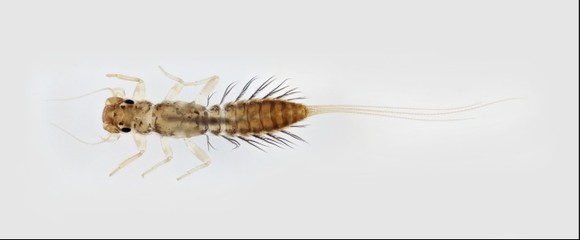
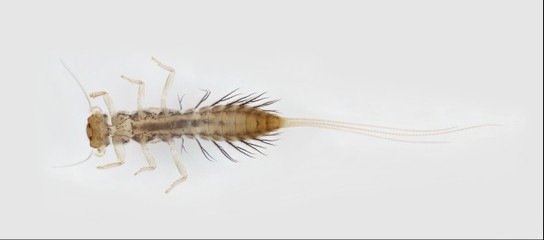
Dorsal
Ventral



